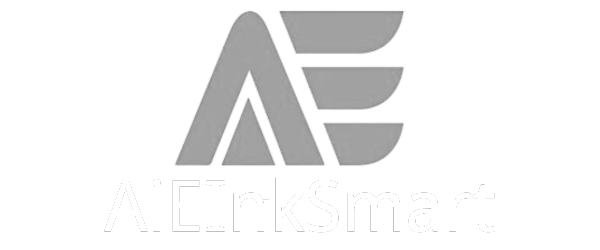
You can streamline your store operations with offline digital price tags. Electronic shelf labels, such as the ESL Price Tag and Esl Retail solutions, let you update price information directly through local networks using technologies like the ESL Gateway AP. Offline retailers benefit from automated price changes, which reduce manual errors and improve productivity. These digital systems support rapid price adjustments and help your staff focus on customer engagement. With electronic shelf labels, you maintain accurate price displays even when your internet connection is unavailable.
Digital Price Tags and Offline Price Changes Explained

Core Technology of Electronic Price Tags
Electronic Shelf Labels (ESL) Systems
You rely on electronic shelf labels (ESLs) to automate and streamline price management in your store. These digital price tags use advanced display and communication technologies to deliver accurate pricing and product information. ESLs typically feature e-paper or LCD screens, which provide high contrast and low power consumption. This ensures that your digital price tags remain readable under various lighting conditions and require minimal maintenance.
The main components of electronic shelf labels include:
- E-ink or LCD display for clear, energy-efficient price presentation
- Wireless communication modules for receiving updates
- Microcontroller for processing pricing data
- Long-lasting batteries that can power the ESLs for five to ten years
You benefit from these features because they reduce the need for frequent battery replacements and minimize operational disruptions. The ultra-low power consumption of ESLs, combined with advanced system-on-chip solutions, extends battery life and supports your retail digital transformation goals. Security features such as hardware-accelerated cryptography and secure boot protect your pricing data from tampering.
Communication Protocols: RF, NFC, Bluetooth
You can choose from several communication protocols to connect your electronic price tags with your central management system. Each protocol offers unique advantages for offline operation and reliability.
| Protocol | Reliability Features | Typical Range (Unobstructed) | Notes on Reliability for Offline Digital Price Tags |
|---|---|---|---|
| Bluetooth Low Energy (BLE) | Adaptive frequency hopping, low power consumption, robust anti-interference, long battery life | Up to 100 m indoors (up to 400 m with Bluetooth 5) | Highly reliable indoors, scalable for large deployments, mitigates interference effectively |
| Near Field Communication (NFC) | Very short range, secure and low latency communication | About 10 cm | Extremely reliable for close-proximity use, ideal for secure customer engagement but limited for wide coverage |
| Radio Frequency (RF) (general and proprietary) | Varies widely; some proprietary RF solutions offer tailored performance but may lack international standards and broad compatibility | Varies by implementation | Reliability depends on interference management and protocol design; some RF systems may be less secure or less standardized |
Bluetooth Low Energy (BLE) stands out for its low power usage and robust anti-interference features. You can deploy thousands of ESLs in a large retail space and maintain reliable communication. BLE’s adaptive frequency hopping reduces interference from other wireless devices, which is common in retail environments. NFC provides secure, short-range communication, making it ideal for customer-facing interactions but less suitable for wide-scale price management. Proprietary RF solutions can optimize communication distance and security for your specific needs, but you should consider compatibility and standardization when planning your deployment.
How Offline Price Changes Work
Local Data Storage and Processing
You can implement offline price changes by leveraging the local data storage capabilities of your electronic shelf labels. ESLs store pricing rules and product information internally or on a local server. This allows you to update prices automatically based on pre-set schedules or triggers, even when your internet connection is unavailable. The microcontroller inside each ESL processes these updates, ensuring that your digital price tags always display the correct pricing.
Offline updates rely on pre-defined pricing rules or algorithms. For example, you can schedule dynamic pricing changes for specific times or dates. This approach gives you flexibility and pricing agility, especially during network outages or in locations with unreliable connectivity.
Note: Offline updates cannot incorporate real-time market data or competitor pricing. You gain flexibility but may sacrifice some responsiveness and accuracy compared to online updates.
Synchronization Methods for Offline Updates
You can synchronize your ESLs using several methods that do not require a constant internet connection. Gateways or hubs act as intermediaries, receiving updates from your central server and transmitting them locally via RF, BLE, or NFC. This setup enables local communication and ensures that your electronic price tags remain up-to-date during offline periods.
ESLs store pricing data locally and only need periodic syncing. When your internet connection is restored, the system automatically synchronizes any offline price changes with your central database. This process maintains pricing consistency across your store and supports your dynamic pricing capabilities.
Updating Electronic Price Tags Without Internet
Manual Updates with Handheld Devices
You can update your digital price tags manually using handheld terminals or mobile devices. Staff members walk through the store and use these devices to scan ESLs and push new pricing information directly to each tag. This method works well for small-scale deployments or temporary offline scenarios.
- Handheld updates allow you to maintain pricing accuracy without relying on a network connection.
- You can use NFC-enabled devices for secure, close-range updates, which minimizes the risk of unauthorized access.
Scheduled Synchronization with Central Systems
You can also schedule batch updates for your electronic shelf labels. Gateways or hubs receive pricing data from your central management software and transmit updates to ESLs at designated times. This method reduces manual labor and ensures that your digital price tags reflect the latest pricing information, even when your store operates offline.
| Method | Description | Advantages | Disadvantages |
|---|---|---|---|
| Radio Frequency (RF) | Uses a central in-store transmitter to send updates directly to labels. | Reliable, low power consumption, long range, minimal interference, works offline without internet. | Requires dedicated RF system, setup cost. |
| Bluetooth Low Energy (BLE) | Suitable for small stores, integrates with mobile pricing apps. | Very energy-efficient, low power usage. | Limited range compared to RF and Wi-Fi. |
| Gateways/Hubs | Intermediate devices receive updates from central server and transmit locally via RF, Wi-Fi, or BLE. | Enables local communication without direct internet connection for labels. | Adds hardware complexity. |
You benefit from these offline update methods by maintaining pricing accuracy and reducing manual errors. While offline updates may not match the speed and accuracy of online updates, they provide essential flexibility for your retail digital transformation strategy. You can ensure your store’s pricing remains consistent and up-to-date, supporting both dynamic pricing and efficient price management.
Key Benefits of Electronic Shelf Labels in Offline Mode
Efficiency and Labor Savings
Rapid Price Updates
You can transform your retail operation efficiency by adopting electronic shelf labels in offline mode. Traditional paper tags require hours of manual labor each week for printing, cutting, and replacing. With electronic price tags, you update prices in seconds, saving thousands of hours annually. The following table highlights the dramatic difference:
| Aspect | Traditional Paper Tags | Offline Digital Price Tags (Electronic Shelf Labels) |
|---|---|---|
| Labor Time | About 10 hours per week | Updates happen in seconds |
| Labor Reduction | N/A | Up to 80% reduction in labor costs |
| Price Update Cycle | Up to two weeks | Reduced to about two days |
| Processing Speed | Baseline (1x) | Up to 3 times faster |
| Daily Volume per Rep | 100 labels | 300 labels |
| Error Rate | Around 20% | Reduced by 90% (around 2%) |
You gain pricing agility and real-time price adjustment, which supports your retail digital transformation goals.
Reduced Manual Errors
ESLs minimize human error by automating the pricing process. In a large US warehouse, Amazon Logistics saw a 30% reduction in labor time for order verification and a drop in picking error rates from 0.8% to 0.1% after implementing ESLs. These improvements led to annual labor savings of $1.5 million and reduced compensation claims by $2 million. You can expect similar results in your store, as ESLs reduce the risk of pricing mistakes and improve overall efficiency.
Pricing Accuracy and Consistency
Real-Time Price Synchronization
You achieve consistent and accurate pricing across your store with ESLs. These systems connect directly to your ERP and POS platforms, enabling real time pricing updates. ESLs use electronic ink displays linked to a central database, so you can update prices quickly and without errors. This integration ensures that every electronic price tag reflects the correct price, even during offline periods.
- ESLs support dynamic pricing, allowing you to adjust prices instantly.
- You eliminate the need for manual price tag changes, which reduces the chance of discrepancies.
Elimination of Human Error
You benefit from a significant reduction in pricing errors. ESLs automate the update process, ensuring that every price change is accurate and consistent. According to industry reports, stores using ESLs typically see a 6% increase in sales and a 2%-3% boost in profit margins due to improved pricing effectiveness. You maintain pricing consistency across all locations, which builds trust with your customers.
Enhanced Customer Experience
Clear and Reliable Pricing Displays
You enhance the shopping experience by providing clear and reliable pricing displays. ESLs show up-to-date prices and product information, which helps customers make informed decisions quickly. Digital price tags reduce confusion and frustration caused by price discrepancies between shelves and checkout.
Tip: Consistent pricing builds customer trust and encourages repeat business.
Support for Promotions and Discounts
You can easily launch promotions and discounts using ESLs. These digital tags display special offers and product reviews, making your store more engaging. Retailers like Pulsure.dk synchronize product information and prices between their online and offline stores, ensuring customers always see accurate pricing. This approach supports an improved customer experience and strengthens your brand image.
ESLs also enable interactive promotions and loyalty programs, enriching the consumer experience and supporting your pricing agility. By integrating with inventory and sales systems, you optimize pricing and stock levels, which benefits both your operations and your customers.
Practical Use Cases for Digital Price Tags in Offline Environments

Grocery Stores and Supermarkets
High-Frequency Price Changes
You manage a fast-paced environment in grocery stores and supermarkets. Prices change frequently due to promotions, supply fluctuations, and seasonal trends. Digital price tags let you update pricing instantly, even when your store operates offline. You avoid the delays and errors that come with manual updates. This technology supports your dynamic pricing capabilities, allowing you to respond quickly to market changes and inventory needs.
Perishable Goods Management
You face unique challenges with perishable goods. Electronic shelf labels help you track expiry dates in real time. You can adjust pricing based on product freshness, which helps you sell near-expiry items faster and reduce food waste. Digital price tags operate reliably in refrigerated and humid environments, so you maintain consistent performance in meat, seafood, and dairy sections. Integration with your POS system allows you to update price and product information instantly, supporting food safety compliance and improving inventory traceability.
- Real-time expiry tracking and dynamic discounting
- Reliable operation in cold and humid areas
- Quick promotion of daily specials
- Reduced manual handling for better hygiene
- QR codes for shelf-life dependent pricing
You improve profitability and operational efficiency while meeting food safety standards.
Electronics and Appliance Retailers
Complex Product Information Display
You need to display detailed product information for electronics and appliances. Offline digital price tags act as micro web pages, showing consumer ratings, stock availability, and promotional details right at the shelf. You save staff time by automating price updates and reduce pricing errors. Customizable digital labels let you highlight each product’s unique features, enhancing the in-store experience.
- Rich content labels encourage shopper engagement
- QR codes and NFC provide access to reviews, AR content, and delivery options
- Omnichannel synchronization ensures consistent pricing and product information
You create a more interactive and informative shopping environment for your customers.
Dynamic Pricing Scenarios
You benefit from dynamic pricing in electronics retail. Digital price tags enable you to adjust prices quickly for flash sales, clearance events, or competitive matching. Offline retailers can maintain pricing accuracy and agility, even without a constant internet connection. This flexibility helps you stay competitive and meet customer expectations.
Pop-Up Shops and Temporary Events
Limited or No Internet Access
You often set up pop-up shops or temporary retail spaces in locations with limited or no internet access. Offline digital price tags give you the ability to manage pricing and product information without relying on a network. You maintain accurate and up-to-date pricing, which builds trust with your customers.
Quick Setup and Teardown
You need solutions that support rapid deployment. Digital price tags allow you to set up and remove pricing displays quickly. You avoid the hassle of printing and replacing paper tags. This efficiency is essential for short-term events, where time and resources are limited.
Tip: Use digital price tags to streamline operations and deliver a professional appearance, even in temporary retail settings.
Step-by-Step Guide to Managing Offline Price Changes
Setting Up Electronic Shelf Labels
Initial Configuration and Pairing
You begin by connecting your electronic shelf label (ESL) station to your store’s network. Plug in the ESL station and assign the correct IP address and subnet mask. Adjust the server IP address to match your network configuration. Next, launch your management software to preview, edit, and manage tag information. You can customize tag size, colors, coordinates, and templates to fit your store’s needs. Connect the ESL system with your backend using supported formats like text files, Excel sheets, or Web API. This integration ensures your digital price tags receive accurate product and price data.
Tip: Sync your ESLs with your inventory management software before going live. This step ensures your price management system reflects real-time stock levels.
Tag Placement and Store Layout
You should plan your tag placement based on your store layout. Place digital price tags where customers can easily see them. Group tags by category or aisle for efficient price management. Avoid placing tags near sources of interference, such as large metal shelves or electronic devices. Proper placement helps maintain strong communication between your ESLs and the central system, even in offline mode.
Updating Prices on Digital Price Tags Offline
Using Handheld Terminals and Mobile Devices
You can update prices on your digital tags without an internet connection by using handheld terminals or mobile devices. Staff members walk through the store, scan each ESL, and push new price information directly to the tag. This method works well for small stores or during network outages. You maintain price accuracy and control over your price management process.
Batch Updates and Synchronization
For larger stores, batch updates offer efficiency. Schedule price changes in your management software, then use gateways or hubs to transmit updates to all ESLs at once. Confirm and push price updates so the screens refresh and logs update accordingly. When your network reconnects, the system synchronizes any offline changes with your central database. This approach keeps your digital price tags current and supports seamless price management.
Monitoring and Troubleshooting
Checking Tag Status and Battery Life
You monitor tag status and battery life through your management dashboard. The system displays each tag’s signal strength, battery level, and last update time. Regular checks help you prevent downtime and ensure all price tags display accurate information.
Resolving Common Issues
If you notice a tag not updating or displaying incorrect pricing, first check its connection and battery. Replace batteries as needed and verify the tag’s pairing with the system. Use your management software to reassign or reset tags. Most issues resolve quickly with these steps, keeping your offline digital price management reliable.
Challenges and Limitations of Electronic Price Tags Offline
Battery Life and Power Management
Expected Lifespan and Replacement
You depend on the battery life of esls for reliable store operations. Most esls use batteries designed to last several years, but actual lifespan depends on how often you update pricing and how much you use the display. Frequent price changes or heavy use of flash features can drain batteries faster. When you select a supplier, you should compare battery performance and consider how it affects your long-term costs. A longer battery life reduces the need for frequent replacements, which lowers maintenance and keeps your esls running smoothly. You avoid operational disruptions and maintain consistent pricing displays when you plan for battery replacement as part of your price management strategy.
Recycling and Sustainability
You play a role in sustainability by managing battery disposal responsibly. Many esls use lithium batteries, which require proper recycling to prevent environmental harm. You should set up a recycling program for used batteries and choose esls with eco-friendly components when possible. Suppliers often provide guidance on recycling and may offer take-back programs. By focusing on sustainability, you support your company’s environmental goals and reduce the impact of electronic waste.
Integration with POS and Inventory Systems
Compatibility and Data Synchronization
You face integration challenges when connecting esls to your POS and inventory systems, especially in offline mode. Legacy POS systems may lack modern APIs, so you might need middleware to translate data and protocols. Network latency or reliability issues can delay price updates, causing mismatches between shelf pricing and checkout. Offline operation complicates synchronization, as esls and POS systems must exchange data once connectivity returns. Edge computing can help by processing data locally, but you must ensure that both systems communicate effectively to keep pricing accurate.
- Network delays can cause price mismatches.
- Middleware bridges gaps between old POS systems and modern esls.
- Two-way data flow is essential for real-time pricing and error reporting.
Handling Synchronization Delays
When your store operates offline, you may experience delays in updating esls with new pricing or inventory data. Offline POS systems store transactions locally, which can make it harder to detect errors or fraud until you reconnect. You must carefully manage the synchronization process to ensure that all esls display the correct pricing once the network is restored. This process requires clear procedures and reliable software to avoid confusion or pricing errors.
Note: Offline esls often require you to maintain some paper tags as a backup, since full digital integration may not always be feasible.
Security and Data Integrity
Preventing Unauthorized Access
You must protect your esls from unauthorized access, especially when operating offline. Without constant network monitoring, esls can become targets for tampering. You should use secure communication protocols and restrict access to handheld devices or gateways that update pricing. Regular audits and strong authentication help you maintain control over your price management system.
Ensuring Accurate Offline Updates
You need to ensure that every offline update to your esls is accurate and secure. Manual updates or delayed synchronization can introduce errors. You should implement checks and logs to track every pricing change. This approach helps you identify and correct mistakes quickly, maintaining trust in your pricing and store operations.
Tip: Many retailers continue to use paper tags alongside esls to address these challenges, reflecting the practical limitations of full digital adoption in offline environments.
Choosing and Maintaining Fully-Customizable Price Labels
Key Features to Consider
Display Quality and Readability
You should prioritize display quality when selecting esls for your store. High-contrast e-paper or LCD screens ensure that prices remain visible under different lighting conditions. Multi-color and graphic display capabilities, with up to four colors, help you highlight promotions and key product information. LED alerts can guide staff to shelves for restocking, reducing out-of-stock situations and improving inventory accuracy. Accessories such as rails, adapters, and holders allow you to integrate customizable price labels seamlessly into your shelving system.
- Real-time price and promotion updates
- LED alerts for inventory management
- Multi-color displays for shopper engagement
- Accessories for flexible installation
Update Speed and Reliability
You need esls that support rapid and reliable updates. Automation enables you to launch event-based promotions and markdowns instantly, reducing waste and improving operational efficiency. NFC and QR code integration allow for interactive shopper engagement and merchandising content. Support for omnichannel order fulfillment, with LED-guided navigation, boosts picking speed and minimizes errors. These features ensure your fully-customizable price labels deliver a seamless omnichannel experience.
Maintenance and Best Practices
Regular Battery Checks
You should perform regular battery checks to extend the lifespan of your esls. Long battery life, with some models lasting up to 15 years, reduces maintenance needs and operational disruptions. Routine cleaning keeps your digital price tags functional and presentable. Always check for physical damage and ensure each tag remains securely attached to the shelf.
- Replace batteries according to tag type and usage
- Clean tags regularly
- Inspect for damage and secure attachment
Firmware and Software Updates
You must keep your esls updated with the latest software patches and security updates. This practice protects your system from vulnerabilities and ensures smooth operation. Schedule regular updates and provide staff training on troubleshooting and system administration. Change management helps your team adapt to new processes and technology, supporting a smooth transition to digital pricing.
Tip: Comprehensive staff training and clear maintenance routines help you maximize the value of your esls investment.
Cost and Long-Term Value
Upfront Investment
You should plan for the initial investment in esls, which includes hardware, management software, gateway hardware, installation, and system integration. The following table summarizes the main cost aspects:
| Cost Aspect | Description | Example/Details/Impact |
|---|---|---|
| Upfront Investment | Includes esls, management software, gateway hardware, installation, and system integration | Hardware cost per tag: $15–$25; total initial investment for mid-sized stores can exceed $100,000. |
| Ongoing Operational Costs | Software updates, technical support, battery replacements, repairs, maintenance, staff training | Lower than traditional pricing labor and material costs. Automation reduces manual labor, especially during promotions. |
| Labor Cost Savings | Automation of price updates reduces manual tasks and staffing requirements | Significant savings over time can offset the initial investment. |
| Pricing Accuracy | Direct connection to POS system nearly eliminates pricing errors | Up to 100% reduction in pricing errors, reducing compliance fines and improving customer trust. |
| Environmental Impact | Eliminates frequent printing and disposal of paper and plastic tags | Reduces waste, lowers carbon footprint, and supports sustainability goals. |
Ongoing Savings and ROI
You benefit from ongoing savings as automation reduces manual labor and printing costs. Most retailers see a return on investment within 12 to 24 months. Large retailers often recoup their investment in under a year. More frequent price updates accelerate your ROI by improving pricing accuracy and reducing errors. A Forrester Consulting study found a five-year ROI of 277% for electronic shelf label solutions, with a payback period of 18 months. Operational efficiencies and financial returns make esls a smart long-term investment for your store.
Tips for Successful Implementation of Digital Price Tags
Staff Training and Support
Onboarding and Education
You set your team up for success by investing in comprehensive training programs. Start with interactive modules and AI-supported simulations that help staff build confidence and practical skills. Roll out your digital price tag system in phases, beginning with pilot projects. This approach gives your team hands-on experience and early wins, which accelerates adoption. Make sure you communicate the purpose and benefits of digital price tags clearly. When you align the technology with your store’s goals, your staff understands its value.
Tip: Engage your leadership team to champion the change. Their support builds trust and credibility among employees.
Ongoing Technical Assistance
You maintain momentum by offering ongoing support and coaching. Tailor assistance to individual needs and encourage a positive mindset. Use regular feedback, such as anonymous surveys, to identify skill gaps and refine your training approach. Recognize and celebrate early successes to reinforce positive behavior. When you embed digital price tags and AI tools into daily workflows, you ensure long-term integration and operational efficiency.
Store Layout and Tag Placement Strategies
Maximizing Visibility and Accessibility
You maximize the impact of your digital price tags by optimizing store layout and tag placement. Group complementary products together, such as placing pasta sauces near pasta, to encourage cross-selling. Position high-margin or seasonal products at eye level, since most purchases happen from this placement. Design open pathways to guide customer flow and avoid overcrowding. Use strategic signage to direct shoppers toward promotions.
- Place electronic shelf labels where customers can easily see them.
- Use colored LED indicators and QR codes on tags to highlight deals and boost cross-sales.
Minimizing Interference and Errors
You reduce errors by minimizing sources of interference. Avoid placing tags near large metal shelves or electronic devices that can disrupt communication. Test your layout to ensure strong signal strength for all tags. Regularly review tag placement and adjust as needed to maintain reliable updates and clear displays.
Evaluating Vendor Support for Electronic Shelf Labels
Service Agreements and Warranties
You protect your investment by reviewing service agreements and warranties before choosing a vendor. Look for clear terms that cover hardware, software, and battery replacement. A strong warranty gives you peace of mind and reduces unexpected costs.
Technical Support and Upgrades
You ensure smooth operations by selecting vendors who offer responsive technical support and regular upgrades. Reliable support helps you resolve issues quickly and keeps your system up to date. Ask about available training resources and upgrade paths to maintain peak performance.
Note: Strong vendor support is essential for long-term success with digital price tags.
You gain a powerful tool with offline digital price tags. These systems let you update prices and product details without relying on constant internet access. Retailers see operational efficiency soar, with labor for price label maintenance dropping by over 80% and error rates falling below 0.1%. You also improve inventory accuracy and reduce losses from expired goods. Enhanced consumer experiences, such as dynamic pricing and personalized interactions, help you meet new retail trends. When you choose fully-customizable price labels, focus on display quality, update speed, and system integration. Start by evaluating your store’s needs and partner with vendors who support your seamless transition.
FAQ
What happens if the power goes out in my store?
Your electronic shelf labels retain the last updated price and product information. The display uses e-paper or LCD technology, which keeps information visible even without power. You do not lose pricing data during short-term outages.
Can I update prices on digital tags without an internet connection?
Yes, you can update prices using handheld devices or local gateways. These tools communicate directly with your electronic shelf labels. You do not need a constant internet connection for local price changes.
How secure are offline digital price tags?
You benefit from secure communication protocols like encrypted RF or NFC. Only authorized staff can access and update the tags. Regular audits and authentication procedures help you maintain system security.
How long do the batteries in electronic shelf labels last?
Most batteries last between five and ten years, depending on usage and update frequency. You should check battery status regularly through your management dashboard to avoid unexpected downtime.
Do offline digital price tags support promotions and discounts?
Yes, you can schedule and display promotions or discounts directly on the tags. You manage these updates through your local system or handheld device, ensuring customers always see current offers.
What should I do if a tag stops updating?
First, check the battery and connection status. If the issue persists, use your management software to reset or reassign the tag. Most problems resolve quickly with these steps.
Can I integrate offline digital price tags with my existing POS system?
You can integrate most electronic shelf labels with modern POS systems. Some legacy systems may require middleware or additional configuration. Consult your vendor for compatibility details.
Are offline digital price tags suitable for temporary retail setups?
Yes, you can deploy these tags quickly in pop-up shops or events. They operate independently of internet access, making them ideal for temporary or remote locations.


